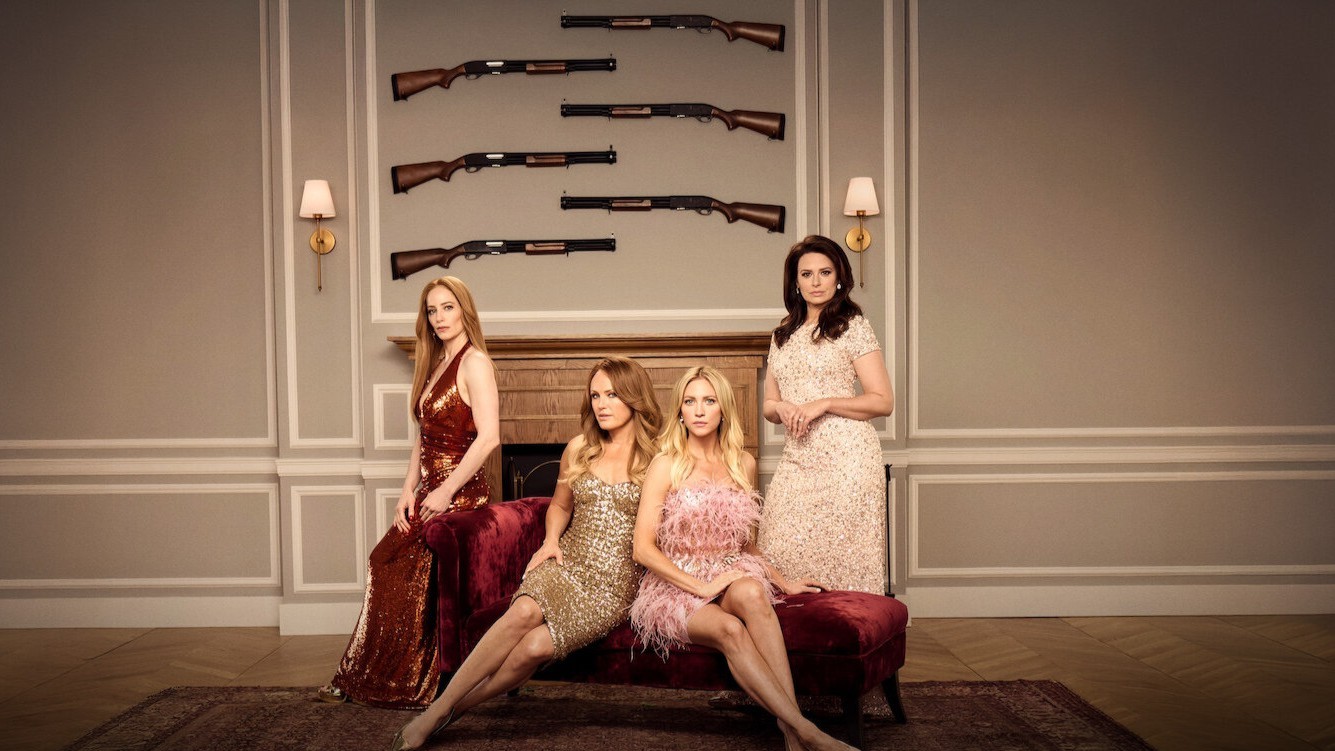From elite shock troops to comic relief to hero material, stormtroopers have proven to be Star Wars’ most flexible villains
The use of stormtroopers has evolved from A New Hope to the Mandalorian
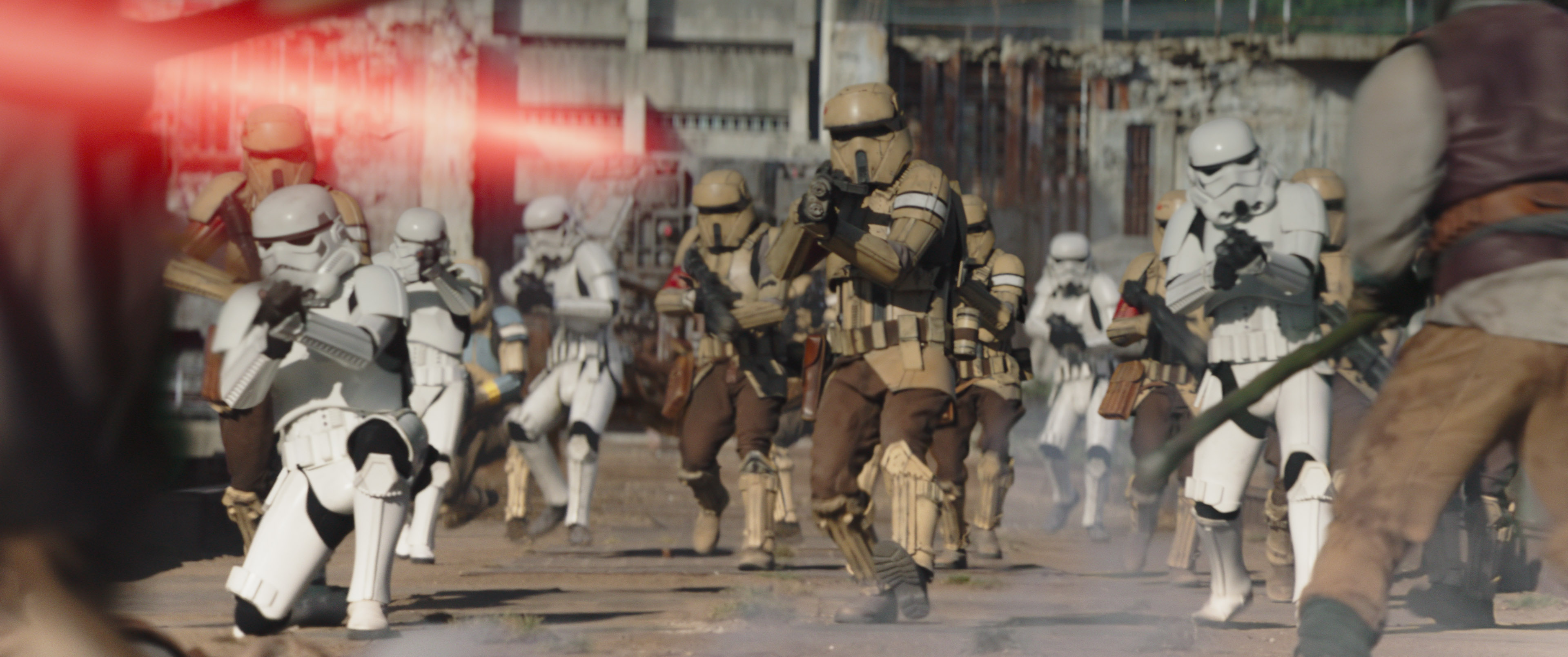
Star Wars: A New Hope opens with a bang. Princess Leia Organa’s ship is captured by an Imperial Star Destroyer and the soldiers onboard nervously position themselves in the narrow hallway, armed and ready to face what comes. When the doors open, stormtroopers come out firing. They’re an imposing force, heavily armed and fully armored compared to the rebels who just have helmets, and while they do take some casualties, they quickly force the rebels to retreat.
By the time Darth Vader enters the scene, the stormtroopers already have things well in hand. They’ve got most of the rebel forces captured, and while Leia manages to take down one of her pursuers, it’s a stormtrooper who stuns her and delivers her to Vader.
That first scene is arguably the most effective the stormtroopers ever are in the Star Wars franchise. While George Lucas envisioned them as the Galactic Empire’s elite shock troopers and the core of its military might, later in that movie they’re largely used as generic bad guys that let the heroes show off, whether it’s Obi-Wan Kenobi sending them away with a Jedi mind trick or Luke Skywalker and Han Solo jumping them to steal disguises.
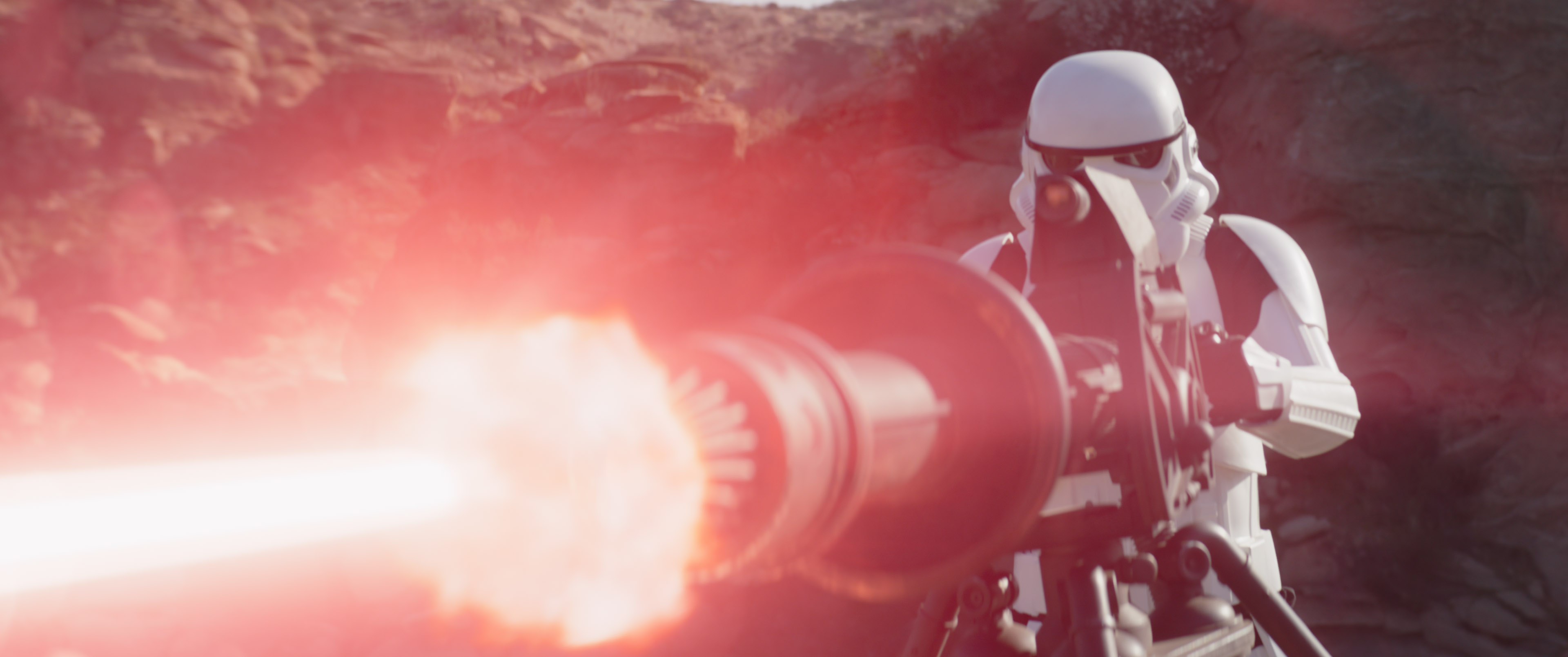
Yet the stormtroopers remain among the most iconic villains of all time. As faceless villains that come in large numbers and can be outfitted for a wide variety of terrains and jobs, they can find a home in any fight in the Star Wars universe. And as the franchise moved beyond Lucas’ control, other writers and fans found ways to use them as comic relief, reluctant heroes, and a force for good.
Lucas named the Stormtroopers for the German troops of the same name deployed in World War I but gave them a role more like Nazis, soldiers carrying out the will of one of the evilest forces the world had ever seen. The fact that they’re so often defeated by smaller and less technologically sophisticated forces from the Rebel Alliance to the Ewoks of Endor is part of the anti-Vietnam War political message Lucas weaved throughout his first trilogy.
The mythology of the stormtroopers grew over time as Lucas and other creators explored what the galaxy was like before and after the rise of the Empire. The prequels focused on the rise of the stormtroopers as a clone army, perfect soldiers grown in vats and meant to serve as docile agents of the Jedi and Galactic Republic. While based off the genetic of the human bounty hunter Jango Fett, the clones age at twice the rate so that they’re battle ready faster.
It’s a pretty horrifying manifestation of the military industrial complex that Lucas spent much of his carrier railing against. The clone troopers are largely seen as disposable cannon fodder with just as little humanity as the droids they primarily fight against. They’re also shown to have no true loyalty to the generals they serve under in Revenge of the Sith, when they execute Order 66 and murder the Jedi. A trooper might be no match for a Jedi normally, but they prove deadly through a mix of numbers and treachery.
The latest updates, reviews and unmissable series to watch and more!
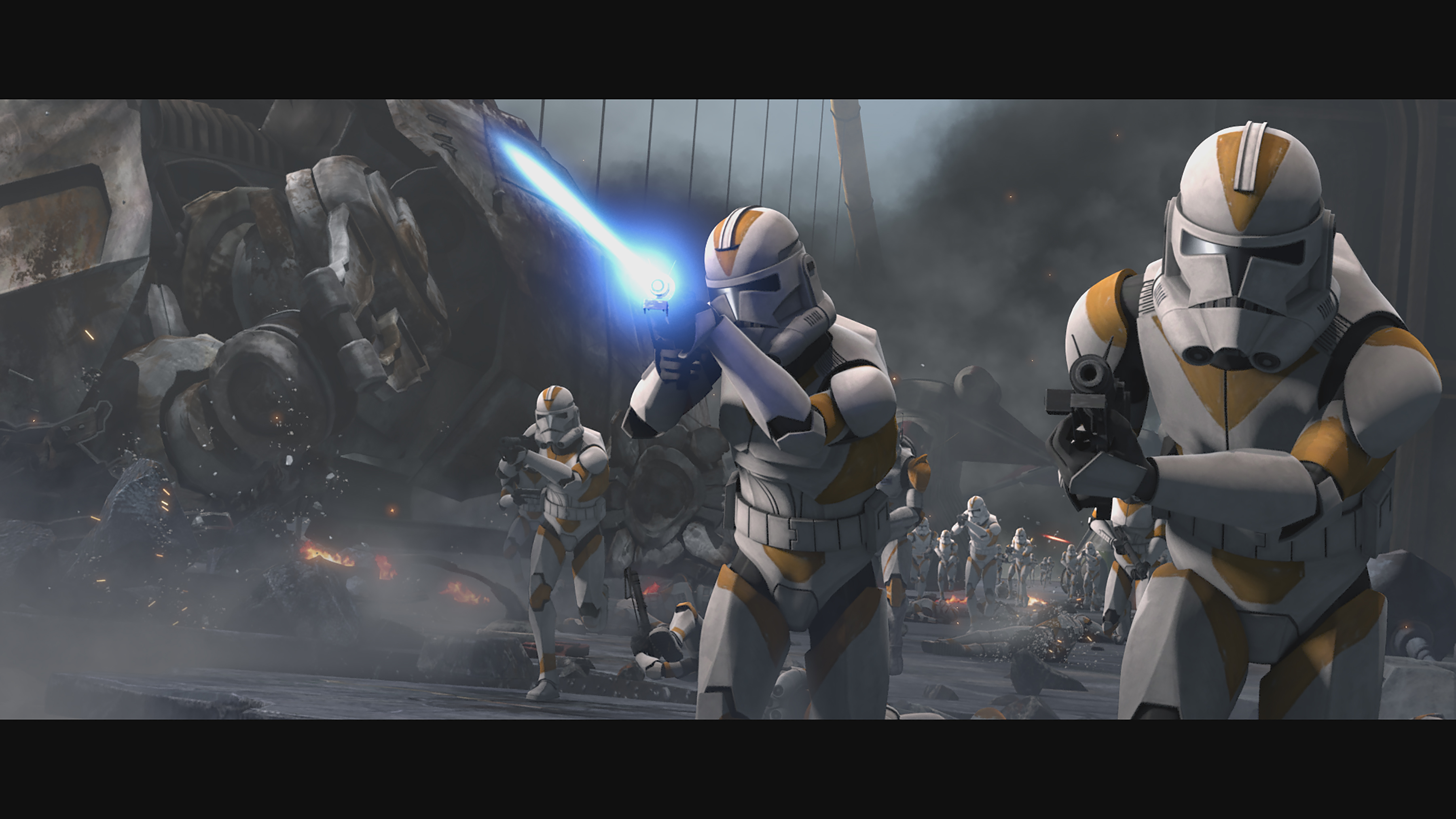
Yet the troopers were redeemed through the brilliant animated series Star Wars: The Clone Wars, which was created by Lucas and primarily written and directed by Dave Filoni. Set in the period between Attack of the Clones and Revenge of the Sith, the series added depth and nuance to all of the plots and characters featured in the maligned prequel films while introducing new characters like Saw Gerrera and Ahsoka Tano that have since become parts of the Star Wars cannon. Yet it was the clone troopers that were always the stars of the show.
Voice actor Dee Bradley Baker brought individuality to a huge number of clones ranging from the stalwart Captain Rex, who served alongside the brash but talented General Anakin Skywalker, to 99, a malformed clone who spent his life as a janitor in the cloning facility on Kamino but always offered support and reassurances to his brothers. While the clones were only given numbers, like 99, each found a name for themselves and the animators did fantastic work coming up with ways to distinguish them through their haircuts, tattoos, and stylized armor.
The result was that The Clone Wars often felt like a Star Wars version of Band of Brothers, a story of soldiers fighting and dying together for a cause they believed was righteous. The show was filled with noble sacrifices, touching stories, and moral conflicts, like when Rex encounters a clone who has deserted and has to decide whether or not to report him or let him continue his quiet life away from the war that he was literally born for.
Order 66 is reframed as an act of betrayal against the clones rather than by the clones through a plot by Sheev Palpatine to plant chips in the clones’ heads that would force them to turn against the Jedis they were devoted to. In a particularly chilling arc in the Clone Wars, one of the chips starts activating early and leads the afflicted clone to kill a Jedi while murmuring “Good soldiers follow orders.”
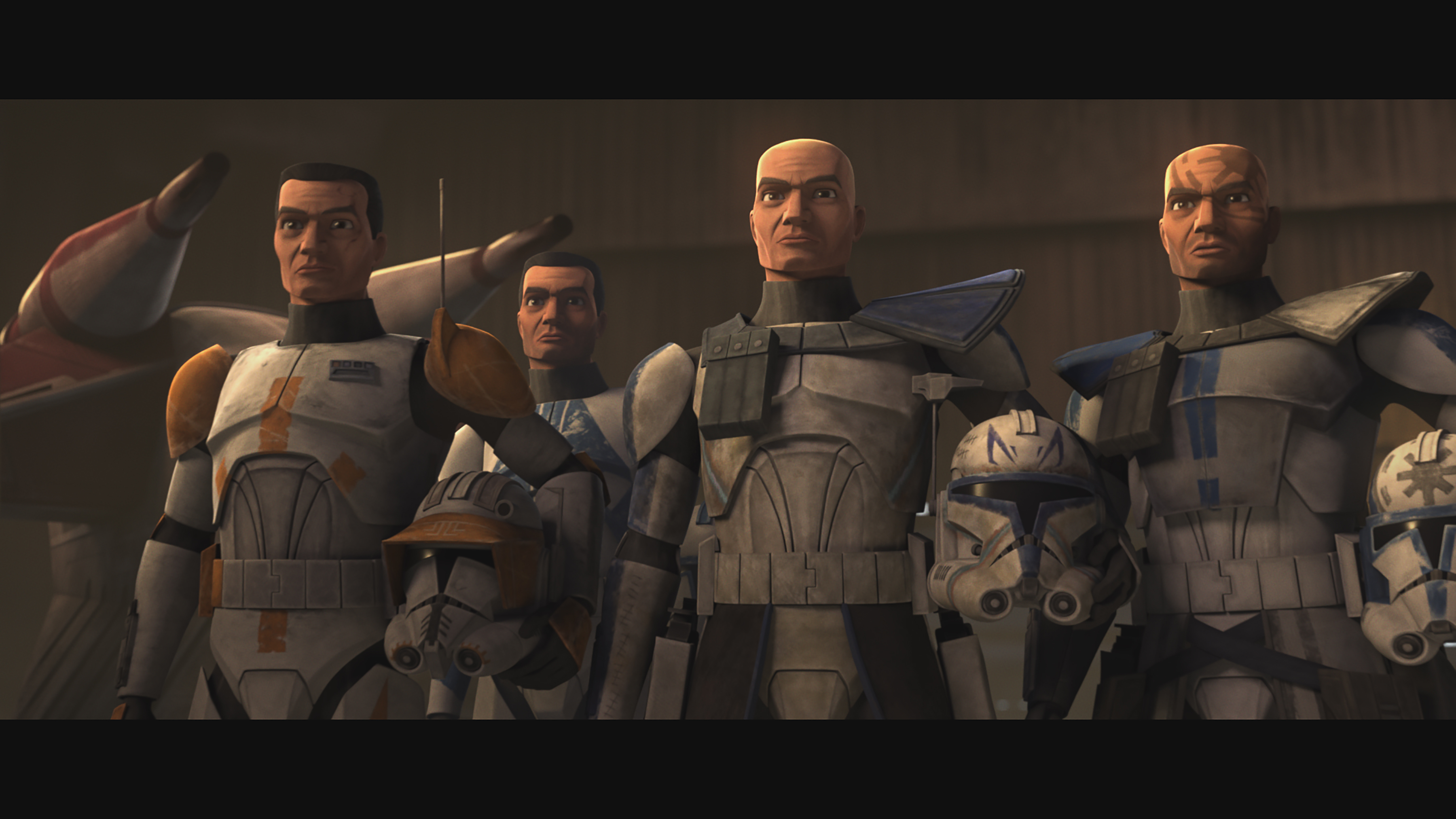
The clone troopers were largely retired after Order 66, with the Empire turning to using a mix of volunteers and heavily indoctrinated conscripts to fill out the ranks. That transition is also used to explain why the clone troopers were such impressive fighters and the stormtroopers are lackluster by comparison.
Rex joins the Rebellion in Star Wars Rebels, which was co-created by Filoni, Simon Kinberg, and Carrie Beck, and he’s constantly making fun of the stormtroopers for having bad aim and insisting that their armor is worthless compared to what he wore in the Clone Wars. The difference in quality seems to be accepted on both sides, as an Imperial officer who encounters Rex offers him the chance to join the Empire and train their recruits.
The dichotomy between recruits and conscripts allows for two very different ways of viewing stormtroopers, whether they’re serving the Empire, the First Order, or the Imperial remnants that were active in between. In The Mandalorian they largely serve the same effect as they did in the original trilogy, generic bad guys there to show the power of more significant enemies like Moff Gideon who are mostly dangerous in big numbers. Their bad aim is ammo for jokes by the Mandalorian and also evidenced in bike scout troopers played by Adam Pally and Jason Sudeikis who miserably fail to shoot a stationary object in Chapter 8 of The Mandalorian.
That scene shows both that Gideon views the stormtroopers as so disposable he’ll kill them just to prove his authority, but shows them as individuals with their own fears and desires – in this case mostly not being murdered by Gideon and getting to see Baby Yoda. But just in case you might have some sympathy for them, they keep punching the kid to prove they’re bad guys.
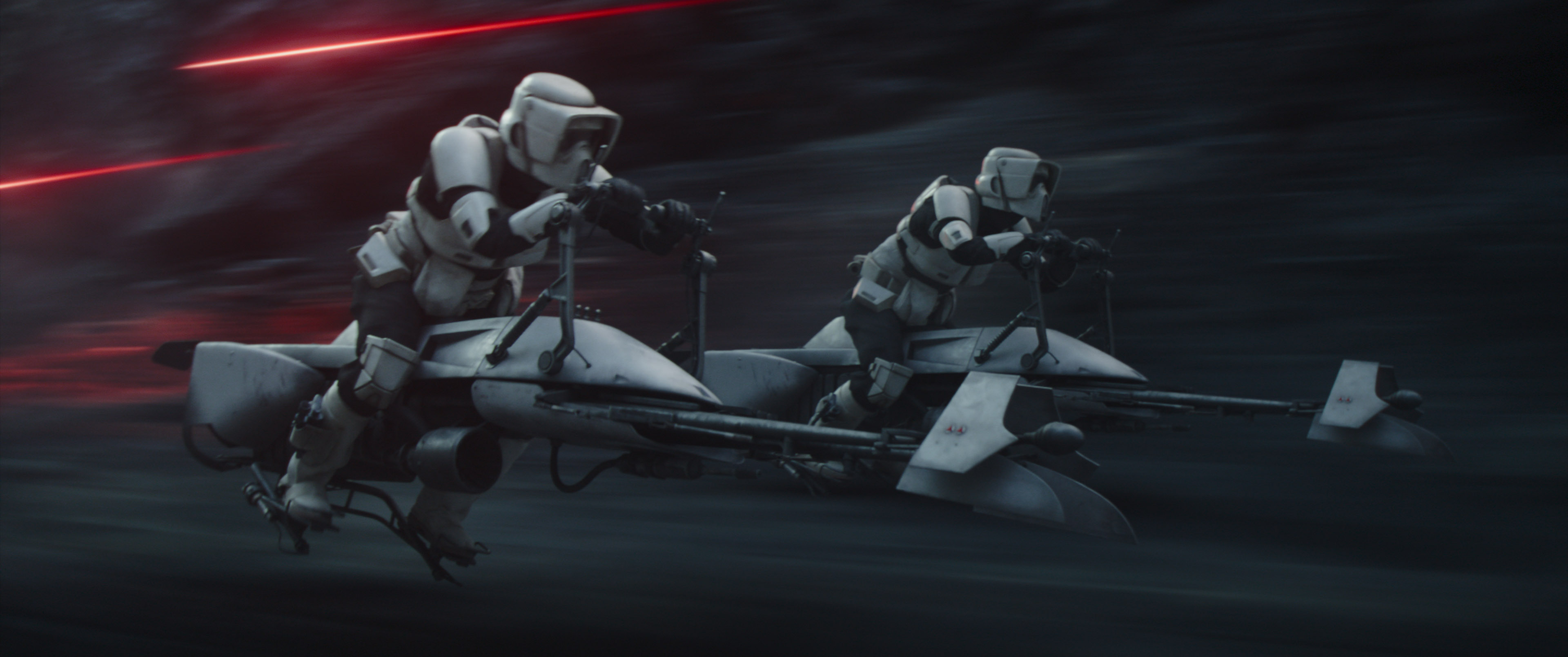
Disney has announced an enormous amount of new Star Wars projects releasing in the next few years, and it’s likely that the creative teams behind them will find new ways to use the stormtroopers as threats and even potential allies for their characters. While Sith Lords and bounty hunters might be the most notorious villains in the galaxy, stormtroopers are the most versatile.
On the other side of the spectrum is FN-2187 aka Finn, who was trained since birth as a stormtrooper by defects because he can’t bear to be part of the First Order’s horrific violence. While he’s initially reluctant to join the Resistance, Finn becomes a true hero capable of wielding a lightsaber and the Force. In The Rise of Skywalker, he discovers that he’s far from the only stormtrooper to desert.
While Finn and the clone troopers put a face on the stormtroopers, it’s the facelessness of them that makes them so appealing to fans. Anyone can don the signature armor and look like they’ve stepped off a movie set. They’re among the most cosplayed characters for that reason and gave rise to the 501st Legion. Founded in 1997, the group of volunteers with the moto “Bad Guys Doing Good” delight people at Star Wars fan events and have raised hundreds of thousands of dollars for the Make a Wish Foundation.
Disney has announced an enormous amount of new Star Wars projects releasing in the next few years, and it’s likely that the creative teams behind them will find new ways to use the stormtroopers as threats and even potential allies for their characters. While Sith Lords and bounty hunters might be the most notorious villains in the galaxy, stormtroopers are the most versatile.

